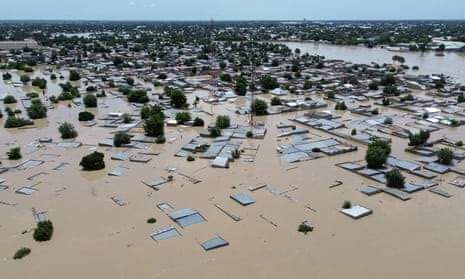No fewer than 404 million students globally have been affected by climate-related school closures between January 2022 and June 2024, according to a report by the World Bank.
The report, titled “Choosing Our Future: Education for Climate Action, attributes this figure to at least 81 countries temporarily shutting down schools due to floods, storms and heatwaves.
The report highlights that climate change, including floods, is causing significant school closures and notes that these disruptions remain largely invisible because they are not being tracked by relevant authorities.
The severe Impact of flooding has been a persistent issue in recent years.
Last week, floods caused by the overflow of the Alau Dam in Borno State, Nigeria displaced nearly two million people in Maiduguri and surrounding areas.
The National Bureau of Statistics recently reported that students in some parts of Nigeria missed 53 school days due to flooding.
The report, titled “Nigeria Flood Impact Recovery Mitigation Assessment Report 2022-2023, indicated that approximately 1.3 million Nigerians were affected by flooding between July and October 2022.
The report listed severely affected states as Bayelsa, Delta, Anambra, Kogi, Nasarawa and Jigawa, among others.
The report stated, “Education can propel climate action but at the same time, climate change is impeding education.
“Climate change is increasing the frequency and intensity of extreme weather events such as cyclones, floods, droughts, heatwaves and wildfires as well as the probability of co-occurring events.
These extreme weather events are increasingly disrupting schooling and precipitating learning losses and dropouts.
Climate change is causing massive school closures.
These disruptions remain invisible because they are not being tracked.
There is no official data on the frequency and severity of school closures due to extreme climate events.
Consequently, this crisis is going largely unnoticed.
“Novel analysis for this report shows that over the past 20 years, schools were closed in at least 75 percent of the climate-related extreme weather events impacting five million people or more.
Most worryingly, the frequency and severity of school closures continue to grow due to climate change.

